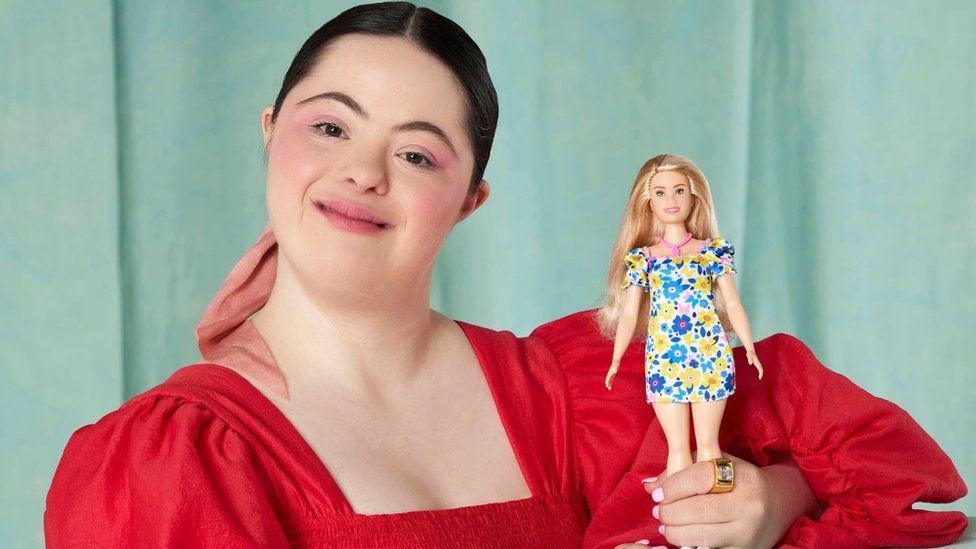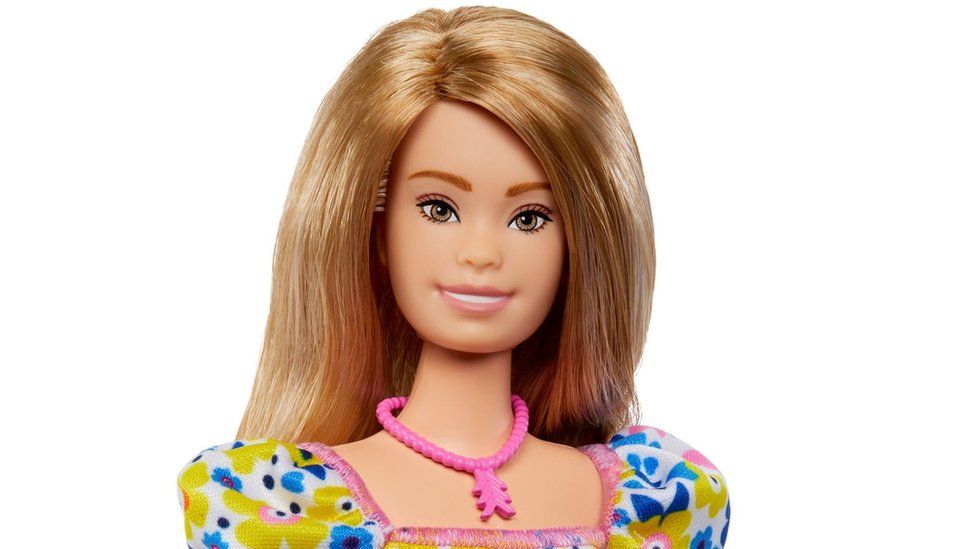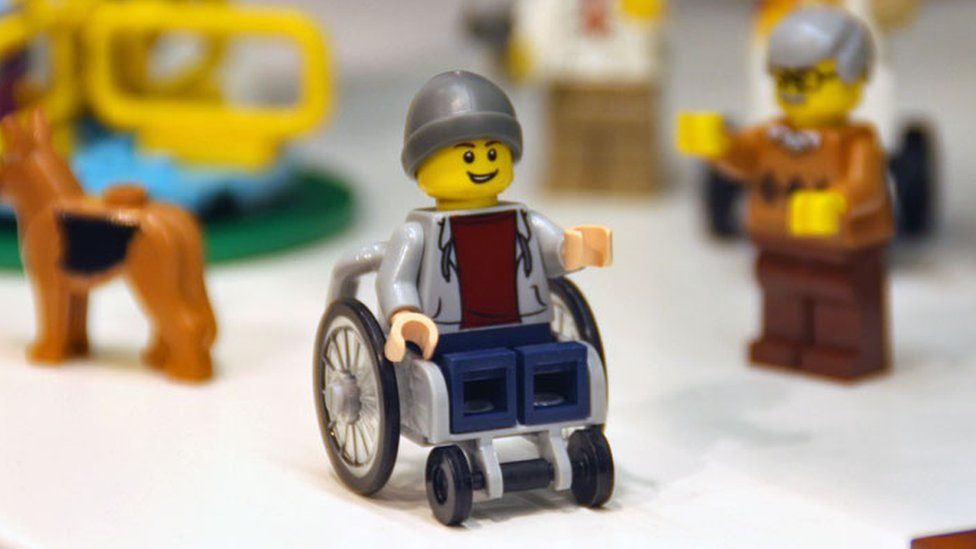
A Barbie with Down's syndrome is the latest doll to be released by Mattel in a bid to make its range more diverse.
The US toy giant had faced previous criticism that the traditional Barbie did not represent real women.
In recent years it has created dolls with a hearing aid, a prosthetic limb and a wheelchair.
Mattel's goal was for "all children to see themselves in Barbie" as well as "play with dolls who do not look like themselves".
The original Barbie doll launched in 1959 featured long legs, a tiny waist, and flowing blonde locks.
Academics from the University of South Australia suggested the likelihood of a woman having Barbie's body shape was one in 100,000.
Some campaigners called for Barbie to represent a more realistic body image, while some people with disabilities said the dolls were not relatable.
In 2016 Mattel released Curvy Barbie, Tall Barbie and Petite Barbie, as well as a wide range of skin tones reflecting many different ethnicities.
Lisa McKnight, global head of Barbie & Dolls at Mattel said she hoped the new doll would help "teach understanding and build a greater sense of empathy, leading to a more accepting world."
Mattel said it worked closely with the US National Down Syndrome Society (NDSS) to ensure its latest doll accurately represented a person with Down's syndrome.
The doll has a shorter frame and a longer torso and its face is rounder with smaller ears, a flat nasal bridge and almond-shaped eyes which can all be characteristics of women who have the genetic condition.
The puff-sleeved dress is yellow and blue, colours associated with Down's syndrome awareness.
The doll also has a pink pendant necklace with three upward chevrons representing the three copies of the 21st chromosome, the genetic material that causes the characteristics associated with Down's syndrome.
It also wears pink ankle foot orthotics to match its outfit as some children with Down's syndrome use orthotics to support their feet and ankles.

NDSS president and CEO Kandi Pickard said it was an honour to work on the project.
"This means so much for our community, who for the first time, can play with a Barbie doll that looks like them.
"We should never underestimate the power of representation. It is a huge step forward for inclusion and a moment that we are celebrating."
British model Ellie Goldstein, an advocate for inclusion, visibility and understanding of people with Down's syndrome, said she felt "overwhelmed" when she saw the doll.
"Diversity is important...as people need to see more people like me out there in the world and not be hidden away," she added.
Ellie was revealed as one of five cover stars of the latest edition of British Vogue in what she said was her "dream".

Other toy firms have made similar moves to try and make their models more inclusive.
In 2016, Lego created its first young disabled mini-figure - a young, beanie-hat wearing wheelchair user - following a campaign by the UK-based #ToyLikeMe group.
The group had criticised the Danish firm for "pandering to disability stereotypes" because until then its only character to use a wheelchair was an elderly man.
The campaign was launched to create more toys to represent the 770,000 disabled children in the UK.
From BBC
